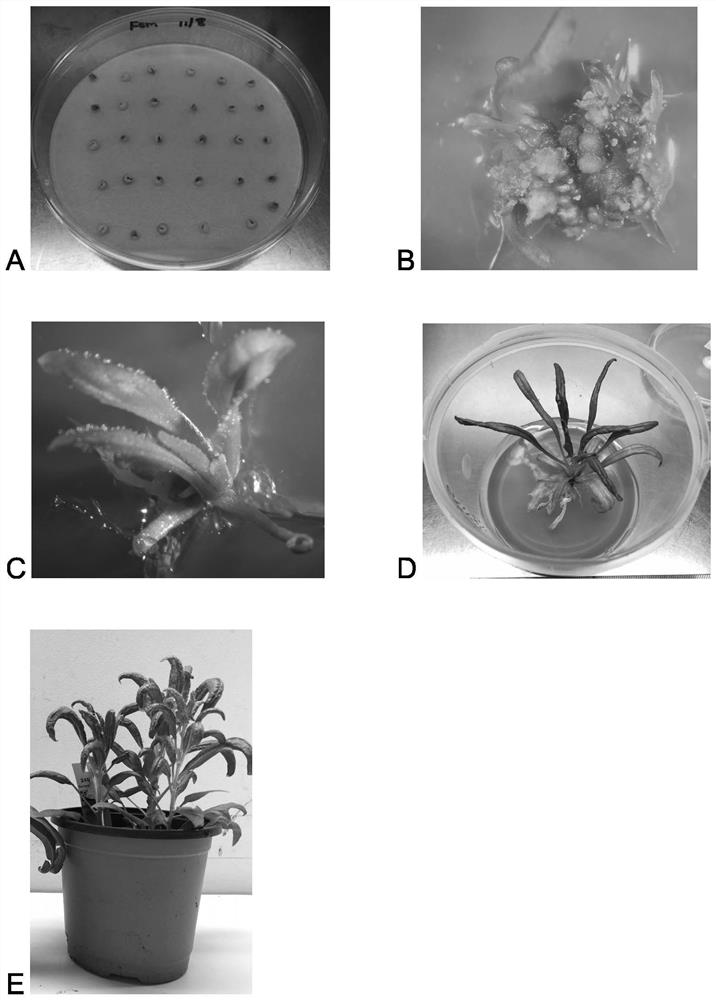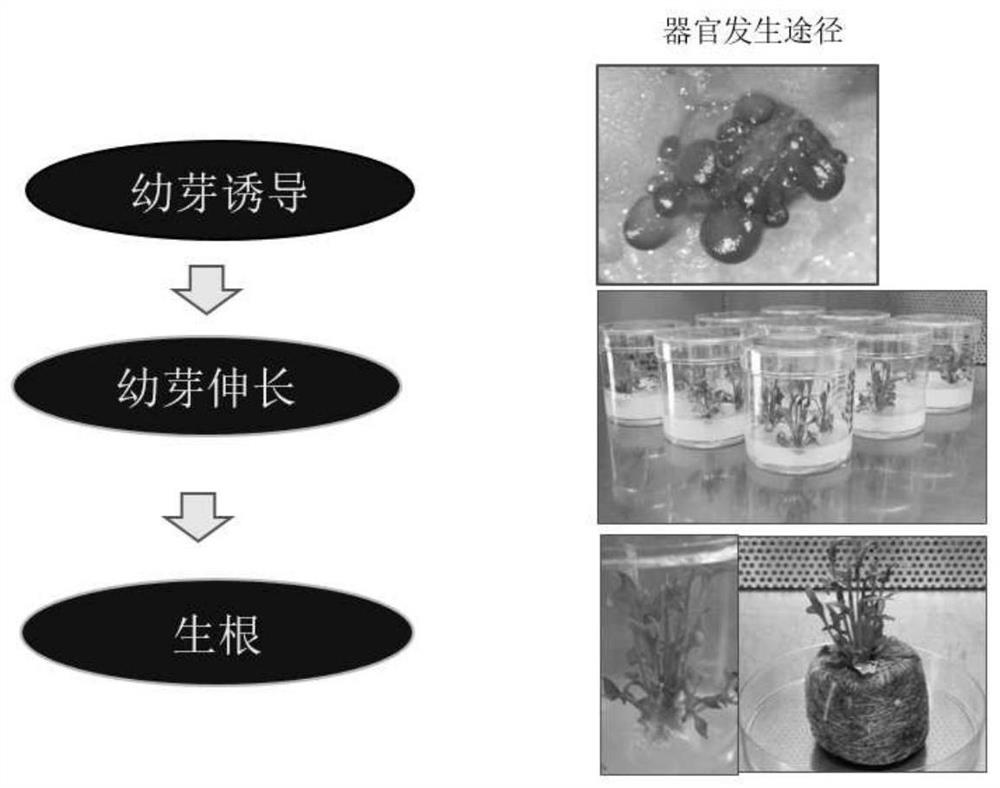Spinach transgenosis method
A technology of transgenic and spinach, applied in the field of plant genetic transformation, can solve the problems of easy to produce deformed regenerated seedlings, long culture period, large genotype dependence, etc., to improve ergonomic problems, reduce spinach genotype dependence, reduce effect of risk
- Summary
- Abstract
- Description
- Claims
- Application Information
AI Technical Summary
Problems solved by technology
Method used
Image
Examples
Embodiment 1
[0034] Example 1: Agrobacterium transformation method using mature seeds as explants
[0035] 1.1. Construct spinach transformation vector p24545 and transfer it into Agrobacterium EHA101 for use
[0036] p24545 is a binary transformation vector, including two gene expression cassettes, namely, the first expression cassette is GFP gene driven by tobacco mosaic virus 35S promoter; the second expression cassette is Arabidopsis thaliana EF promoter driven aadA gene.
[0037] 1.2. Obtainment of transgenic spinach plants
[0038] figure 1 The transformation workflow using mature seeds as explants is shown.
[0039] Spinach seed disinfection: Select the seeds of spinach variety 1 with agronomic properties, 70% alcohol surface disinfection for 3 minutes, deionized water containing 0.1% Tween-20 at 30-60 ° C at 160-200 rpm Treated on a shaker for 40-80 minutes; after that, in a 1% sodium hypochlorite solution containing 0.1% Tween-20 at 30-60 °C on a shaker at 160-200 rpm for 40-80...
Embodiment 2
[0080] Example 2: Agrobacterium transformation method using spinach seedlings as explants
[0081] 2.1. The spinach transformation vector p24545 was constructed and transformed into Agrobacterium EHA101 for use.
[0082] 2.2. Obtainment of transgenic spinach plants
[0083] Spinach seed sterilization: (see section 1.2 in Example 1).
[0084] Spinach seed germination: The seeds were placed on the seed germination medium SIM14 (Table 27) for germination and growth for 7 days at a temperature of 21±1°C and dark conditions.
[0085] Isolation of explants: After 7 days of germination, hypocotyls containing meristems were obtained, cotyledons and true leaves and the bottom of epicotyls were excised, and the remaining approximately 3 mm long tissue was used as explants for transformation.
[0086] Agrobacterium infection: Resuspend Agrobacterium using liquid medium spCMliq (Table 13) with 40 mg / L AS and adjust OD660 to 0.5 for later use. Infection: Place 30-60 explants in a 50ml c...
Embodiment 3
[0118] Example 3: Biolistic Transformation Method Using Mature Seeds as Explants
[0119] 3.1. The spinach transformation vector p24545 was constructed and linearized at the AatII site.
[0120] 3.2. Obtainment of transgenic spinach plants
[0121] Spinach seed sterilization: (see section 1.2 in Example 1).
[0122] Spinach seed germination: (see section 1.2 in Example 1).
[0123] Pretreatment of explants: One day after germination, the seeds were dissected, the seed coats, cotyledons and true leaves were removed, and the plant tissue was placed on the hypertonic medium SposmT1 (Table 25) for 4-6 hours in the dark at 21°C , the explants were placed in the center of the medium.
[0124] Preparation of ammunition: Mix an appropriate amount of gold powder, calcium chloride, spermidine and DNA, and wrap the DNA on the surface of the gold powder.
[0125] Gold powder carries DNA to bombard explants: After the explants are pretreated for 4-6 hours, the treated materials are pla...
PUM
| Property | Measurement | Unit |
|---|---|---|
| concentration | aaaaa | aaaaa |
| concentration | aaaaa | aaaaa |
Abstract
Description
Claims
Application Information
 Login to View More
Login to View More - R&D
- Intellectual Property
- Life Sciences
- Materials
- Tech Scout
- Unparalleled Data Quality
- Higher Quality Content
- 60% Fewer Hallucinations
Browse by: Latest US Patents, China's latest patents, Technical Efficacy Thesaurus, Application Domain, Technology Topic, Popular Technical Reports.
© 2025 PatSnap. All rights reserved.Legal|Privacy policy|Modern Slavery Act Transparency Statement|Sitemap|About US| Contact US: help@patsnap.com



